
The Matterhorn, Zermatt. Image by Samuel Zeller
It has snowed already in the Alps. Time to book a week at Chalet Banja, our favourite property in Switzerland’s most spectacular resort, Zermatt.
Zermatt, the village in a deep valley beneath the iconic Matterhorn, remains LUX’s favourite Alpine wintersports resort. St Moritz might have swankier shops, Courchevel may have a more conveniently laid-out lift system, Cortina d’Ampezzo may have a flash of Venetian style and Chamonix may offer vertiginous heli-skiing; but Zermatt has something nowhere else can offer.
Follow LUX on Instagram: the.official.lux.magazine
That something is a combination of a few pieces of magic. Beside the view of the Matterhorn, itself worth the journey, the ski areas above the resort – Rothorn, Gornergrat and the Klein Matterhorn-Schwarzsee zone – have an unmatched panorama of the Pennine Alps, the highest peaks in the Alps, arranged around Zermatt in a vast horseshoe. In no other area in the Alps do you ascend to a perilous high point above 3000m, stepping out into a subzero gale and fear-inducing view back down, only to realise you are yourself dwarfed by a whole new wall of mountains, some higher than 4500m, and none of them accessible by the lift system. It’s a different dimension.
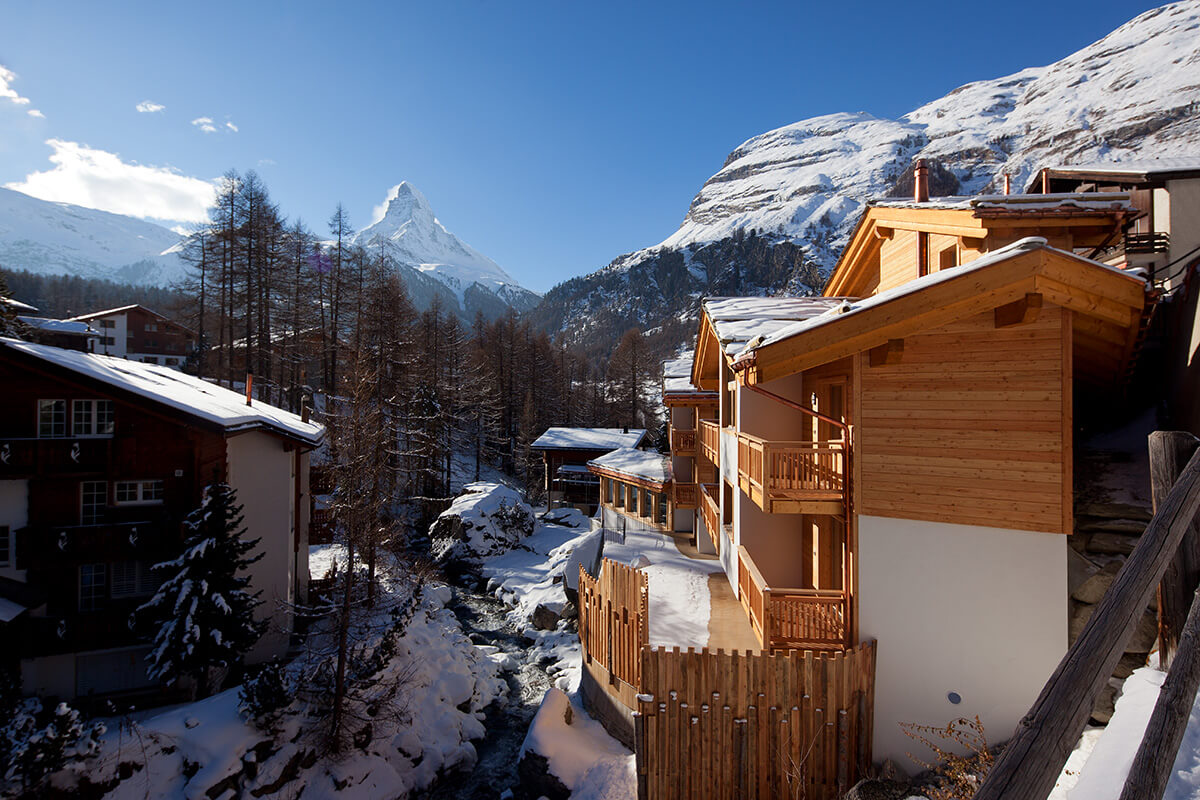
Chalet Banja in the little hamlet of Winkelmatten
As well as the views, and the skiing, which varies from quite tricky to OMG rated (unless you cruise into Italy for the day, which is a bit of light relief), there are mountain restaurants like Chez Vrony, Findlerhof and Blatten (and dozens more besides), which create a kind of Michelin-starred cosiness on the slopes.
And then there’s the resort itself. Zermatt allows no cars, which gives it a pleasing tranquillity. For some, it has sprawled a little too much across the valley in recent years.
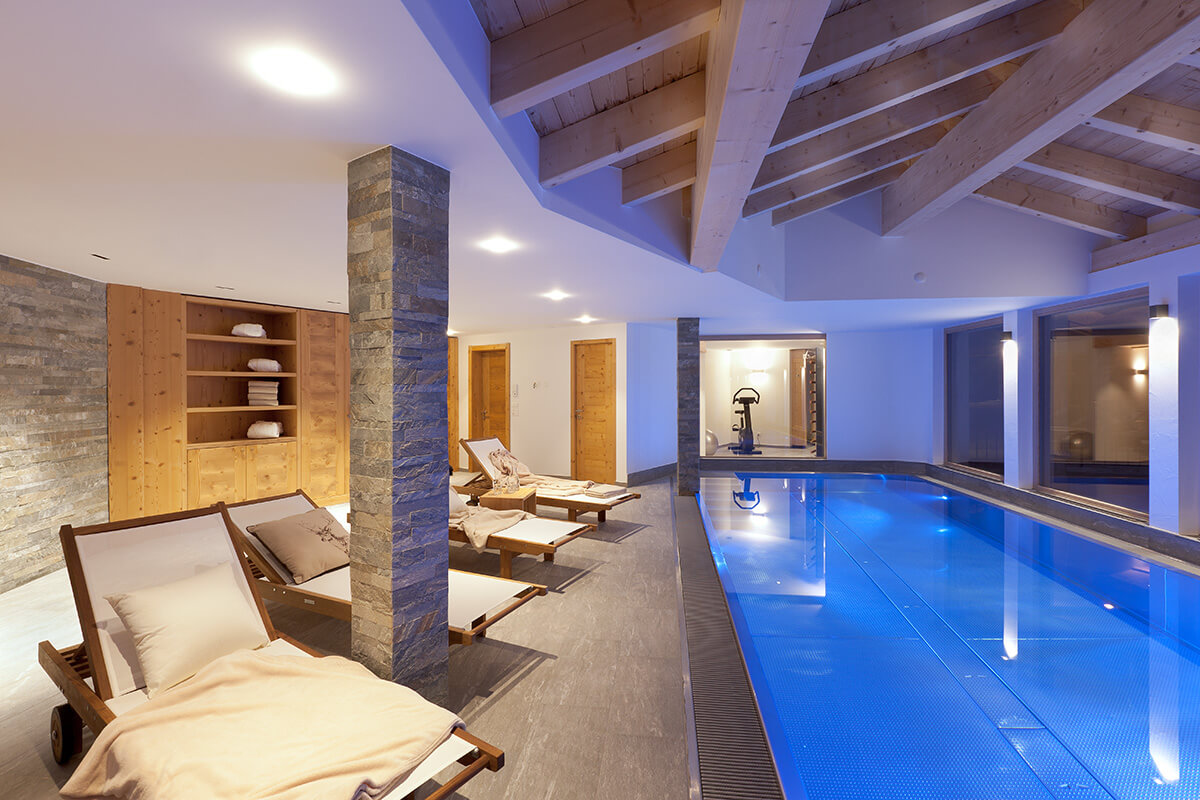
Chalet Banja’s private pool
Which brings us to the jewel in Zermatt’s crown. Technically, Chalet Banja is located in Winkelmatten, a little hamlet on a grassy knoll immediately on the south (Matterhorn) side of the village. Winkelmatten has its own chapel, playground, shop, and a couple of restaurants. Banja is built beautifully into a river embankment, and it has an uninterrupted view across a pine forest and the Schwarzsee hill to the Matterhorn.
Read next: The New Museum’s most important exhibition to date
From the road side, it appears as a low bungalow with a roof carefully created with local stone; the engineering feat of its construction means it is actually a four-storey house with the largest private pool (and gym) on its lower floor, three bedrooms, and a fabulous modern-Valais style kitchen, dining room and living room at its heart. Every floor has stunning views over the Matterhorn, and extensive wraparound balconies, and the construction was a labour of love by a local doctor who works elsewhere in Switzerland, and his wife.
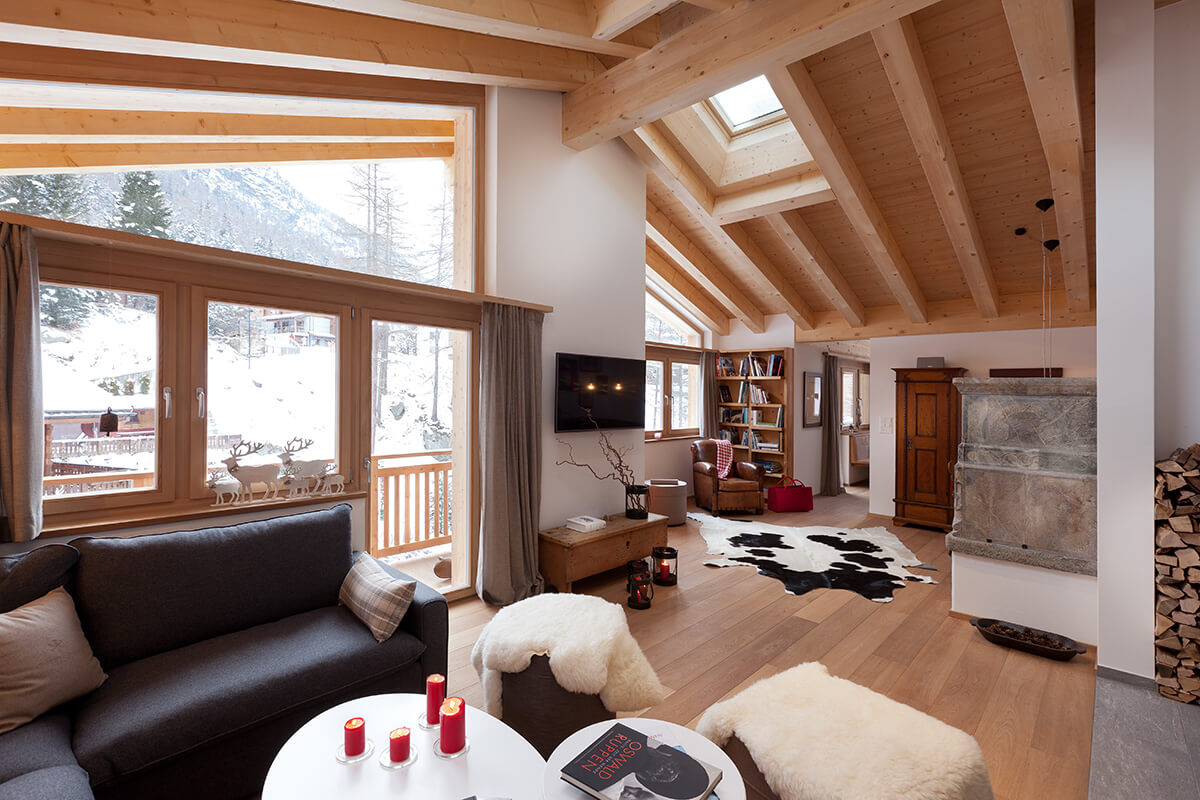
The drawing room and library, which has a bijou selection of Alpine books
Five minutes walk from the Matterhorn lift, Banja has a glorious sense of place, and of Zen. You could sit on the balcony, gaze at the Matterhorn, sip local Cornalin wine all day, and not ski at all; or you could spend your days haring off piste down from Rote Nase and Schwarzsee and come home for a dinner that would be both traditional and modern. All around, those giant peaks would sleep in their subzero coats. It has snowed already in the Swiss Alps; time to book.
Darius Sanai

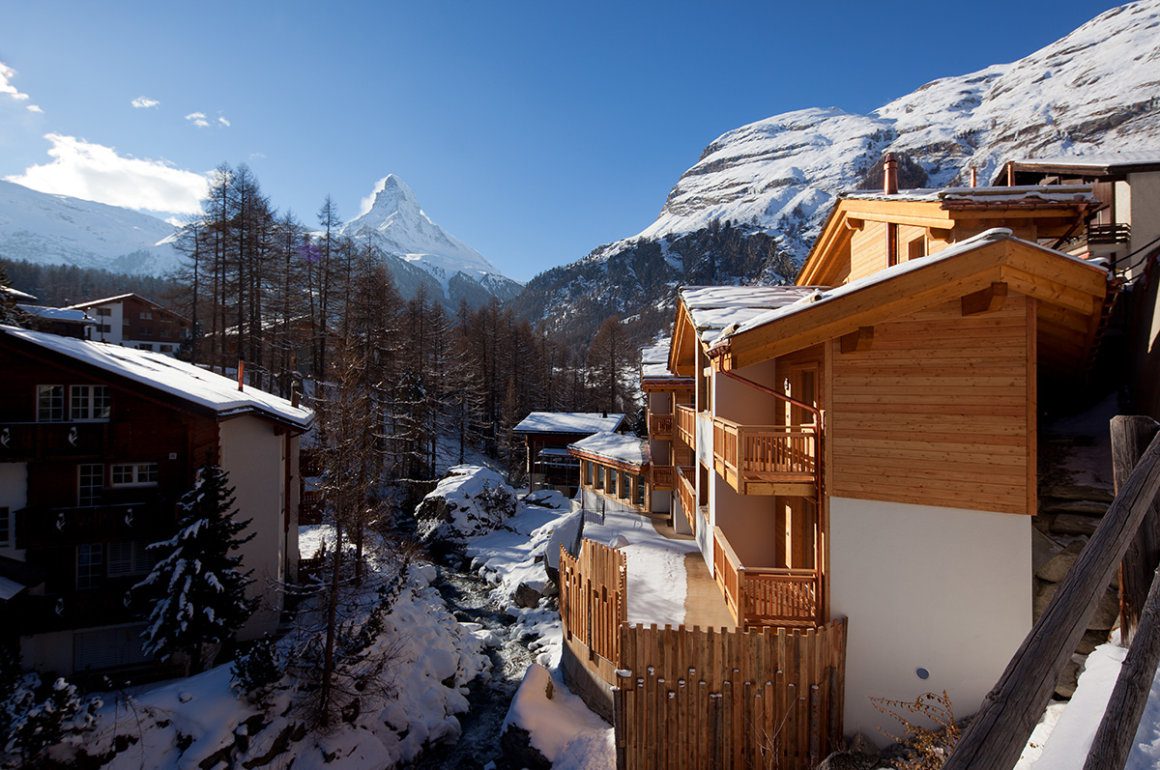


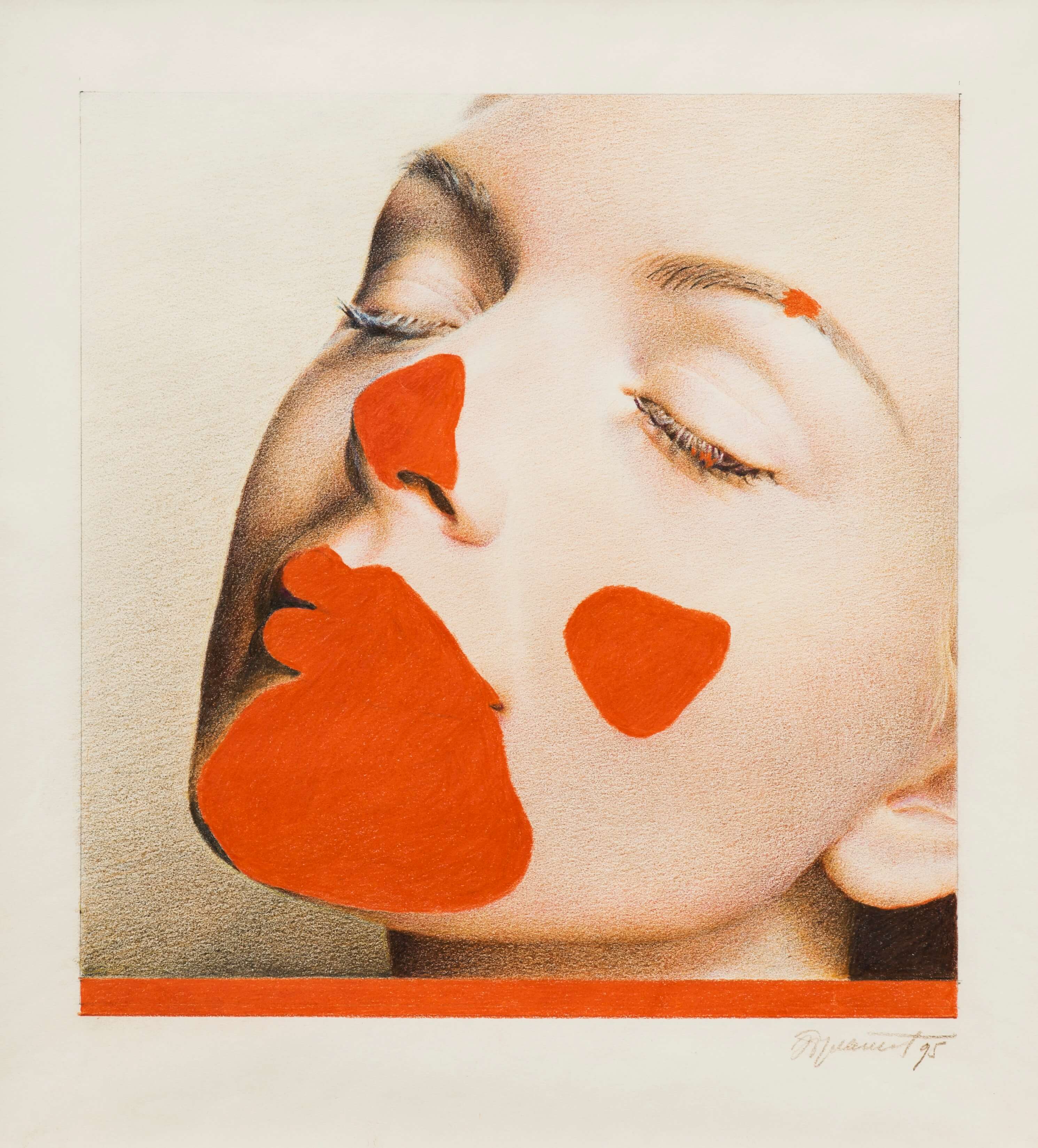






Recent Comments